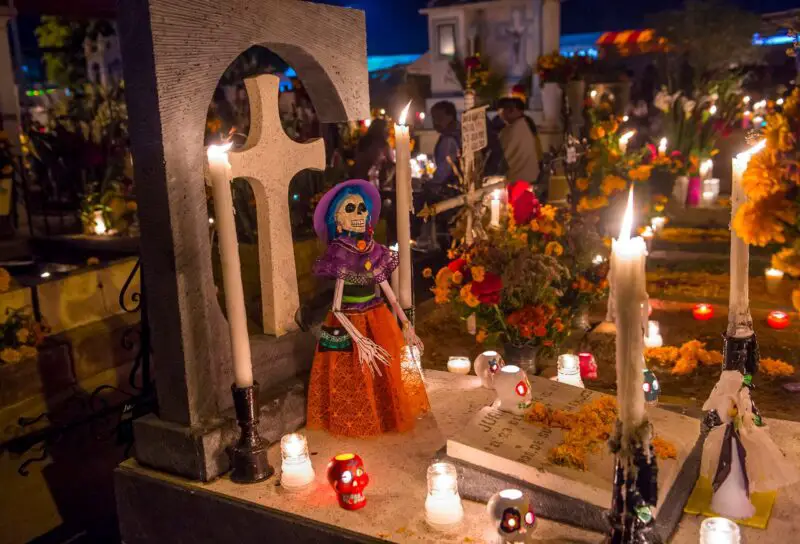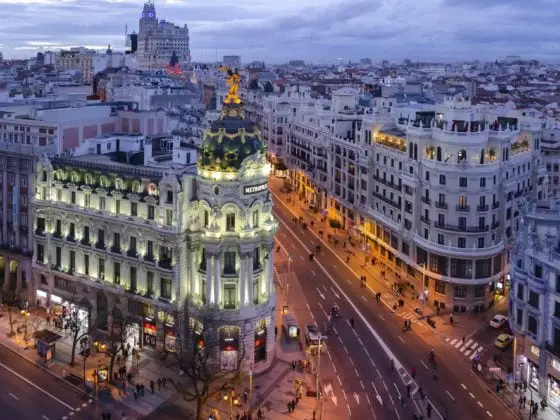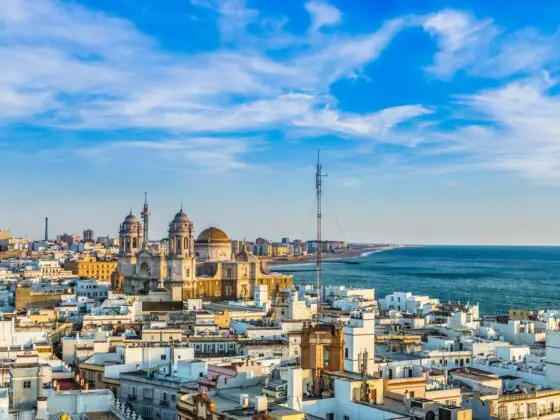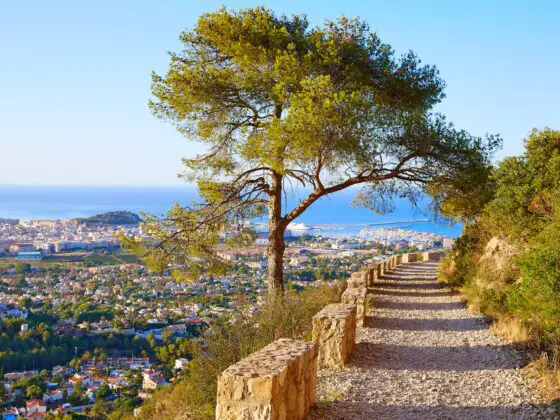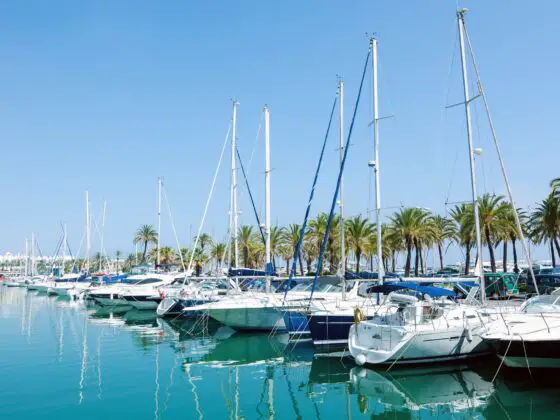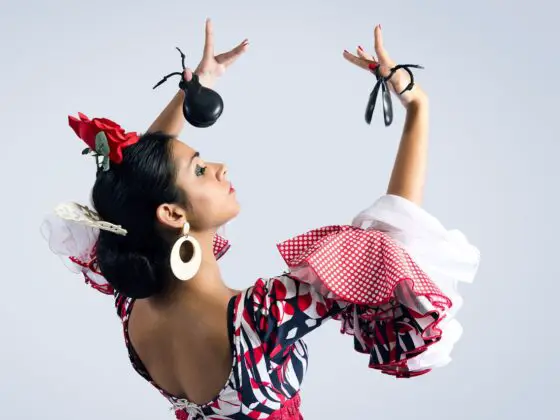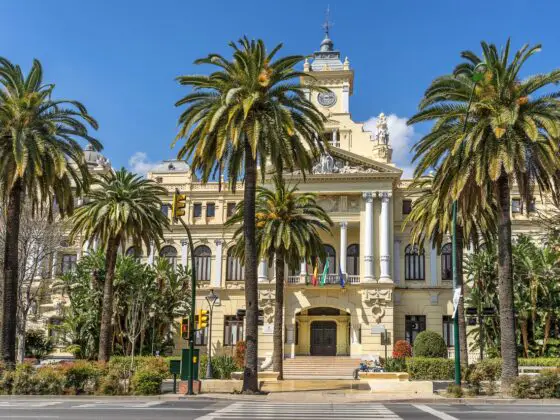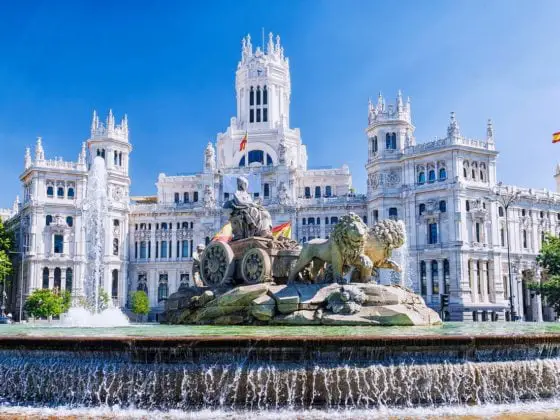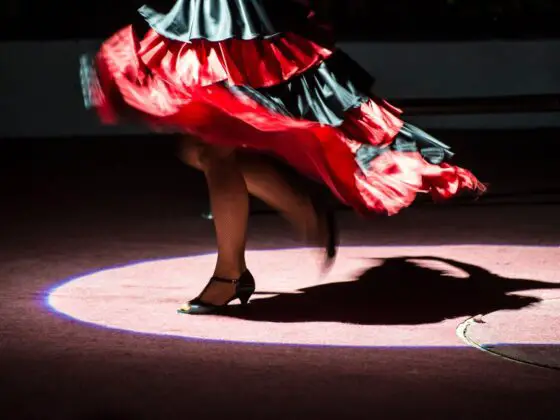There is a good chance that this post contains affiliate links. If you make a purchase through them, I may receive a small commission at no extra cost to you! As an Amazon Associate, I earn from qualifying purchases. As ever, all opinions are my own.
I spent six weeks travelling through Mexico during the Day of the Dead festivities last year, and, when people found out that I used to live in Spain, there was one question I got asked time and time again: do they celebrate the Day of the Dead in Spain?
The answer is… Complicated. You see – they do, but also they don’t!
I used to live in Spain as an au pair, living and working for a Spanish family in Alicante, so I got up to speed with Spanish traditions and celebrations pretty quickly!
Want to find out more about how Dia de los Muertos is celebrated in Spain, as well as what else happens during Halloween in Spain? Let’s get started, then.
Table of Contents
Does Spain Celebrate Day of the Dead?
In short, the answer is that Spain does not celebrate the Day of the Dead as you’d see it in Mexico. You won’t find any painted skulls or face paint to celebrate Day of the Dead in Spain!
However, Spain does have a day to commemorate the dead at a similar time of year.
It’s called Día de Los Fieles Difuntos, and although it originates from the same idea behind the Day of the Dead, it’s a far more religious and sombre day than what you see in Mexico.
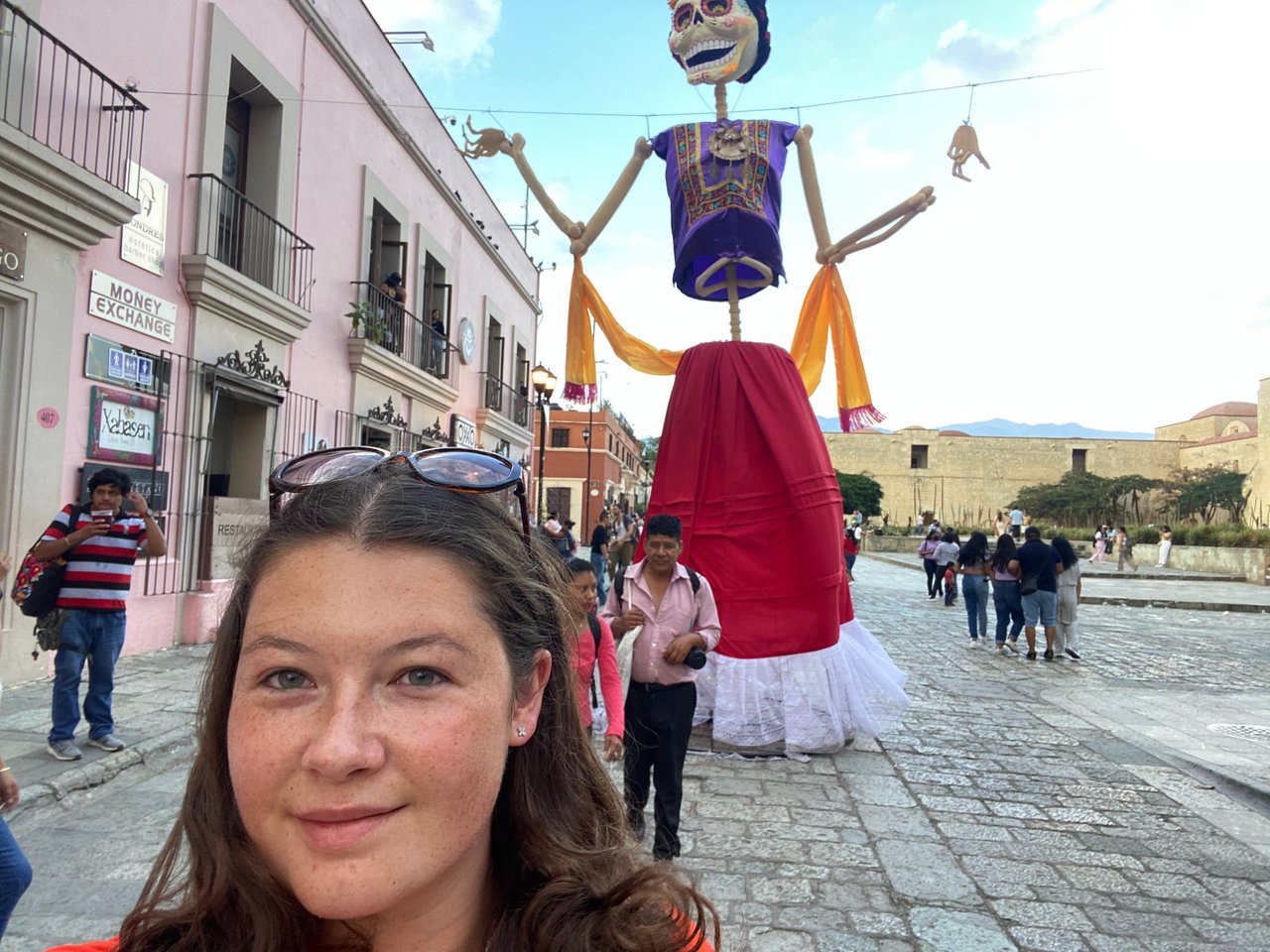
So, let’s go over the two celebrations – the Dia de Los Muertos in Mexico, and the Día de Los Fieles Difuntos in Spain, and compare what the key differences are.
What’s Dia de los Muertos in Mexico?
Dia de los Muertos, or Day of the Dead, takes place on 2 November in Mexico and is a deeply spiritual celebration that honours the lives of loved ones who have passed away.
Contrary to what you may have been led to believe, Mexican Day of the Dead isn’t actually a nationwide Mexican event. I was shocked when I arrived in Mexico and learnt about this!
In fact, Dia de los Muertos was originally, and is still primarily, a celebration that takes place in the state of Oaxaca, Mexico, with Oaxaca City being the centre of the celebrations.
That’s where you’ll see all the “classic” Day of the Dead celebrations – sugar skulls, parades, spooky face paint – the whole nine yards.
In fact, in Mexico City I learnt during a walking tour that the nation’s capital didn’t even have a Day of the Dead parade until the James Bond movie Spectre came out in 2015!
You see, the movie depicted a huge Day of the Dead parade taking place in Mexico City. It looked so good that hordes of tourists started turning up around the Day of the Dead and wondering where on earth the Mexico City parade was!
The city came to the logical conclusion: let’s give the people what they want! Nowadays, other major cities like Guadalajara, Guanajuato and Puerto Vallarta have also joined in the celebrations.
Last year, I had the delightful experience of spending the Day of the Dead in the charming Oaxacan town of Puerto Escondido, Mexico.
The streets came alive with marigold flowers, intricately designed sugar skulls, and of course, the palpable feeling of love and remembrance in the air. Families gather to share stories, songs, and dishes dedicated to their ancestors.
It was very different to how Spain celebrates the Day of the Dead, but it’s a moving celebration of life and love.
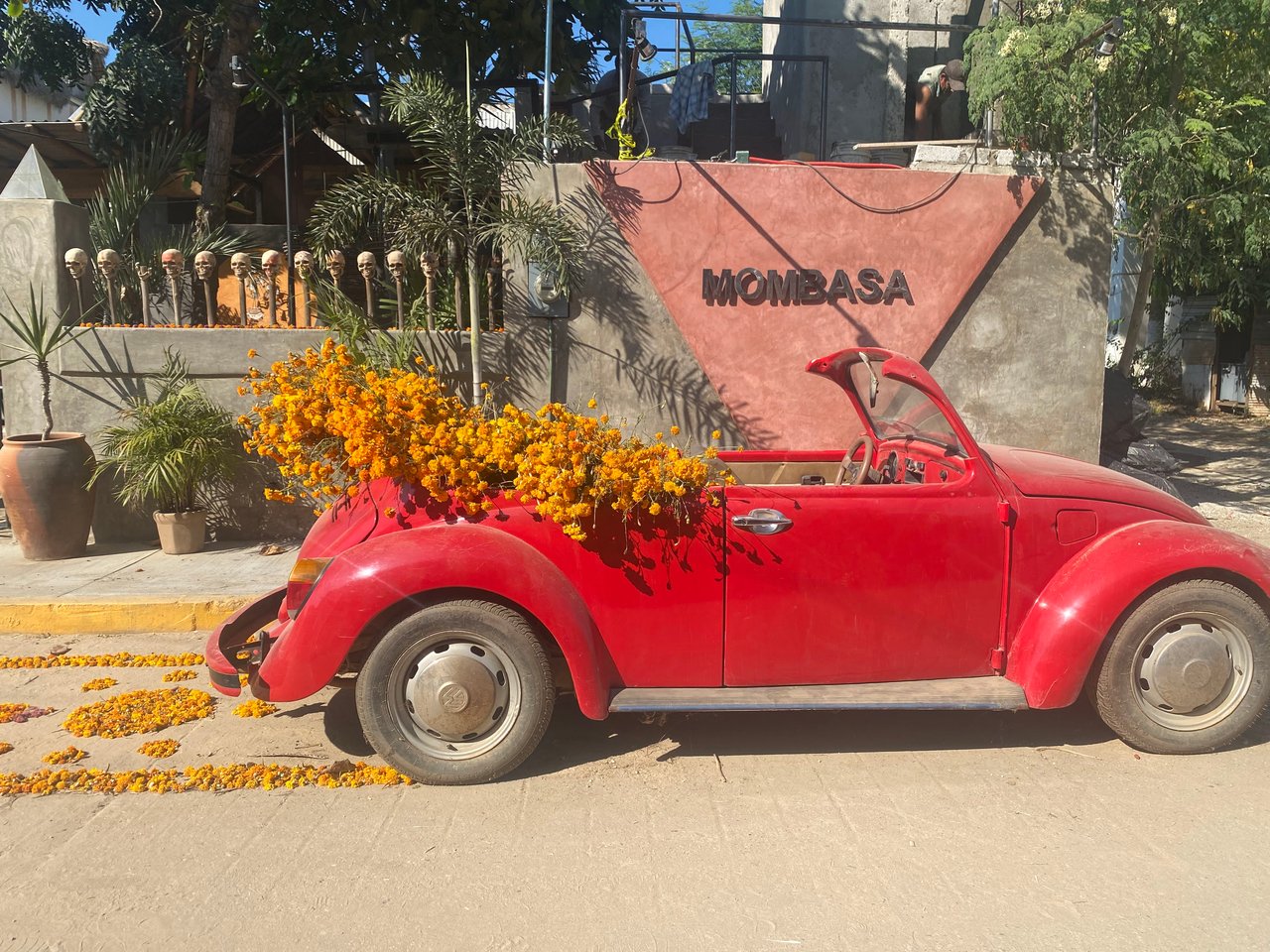
How is Day of the Dead Celebrated in Spain?
Unlike in Mexico, the Day of the Dead in Spain is a much more sombre and quiet affair, and it’s celebrated over three days.
Halloween and the Day of the Dead is not a big deal in Spain – it’s certainly not one of the country’s main holidays like it is in Oaxaca.
The actual “Day of the Dead” in Spain, which takes place on the same day as its Mexican counterpart (2 November) is called Día de Los Fieles Difuntos, but it’s not the star of the show.
Spain’s celebrations actually start on 31 October, and end on 2 November with the Day of the Dead.
So, what happens in Spain during this time? Let’s break it down
31st October: Dia de las Brujas (Day of the Witches)
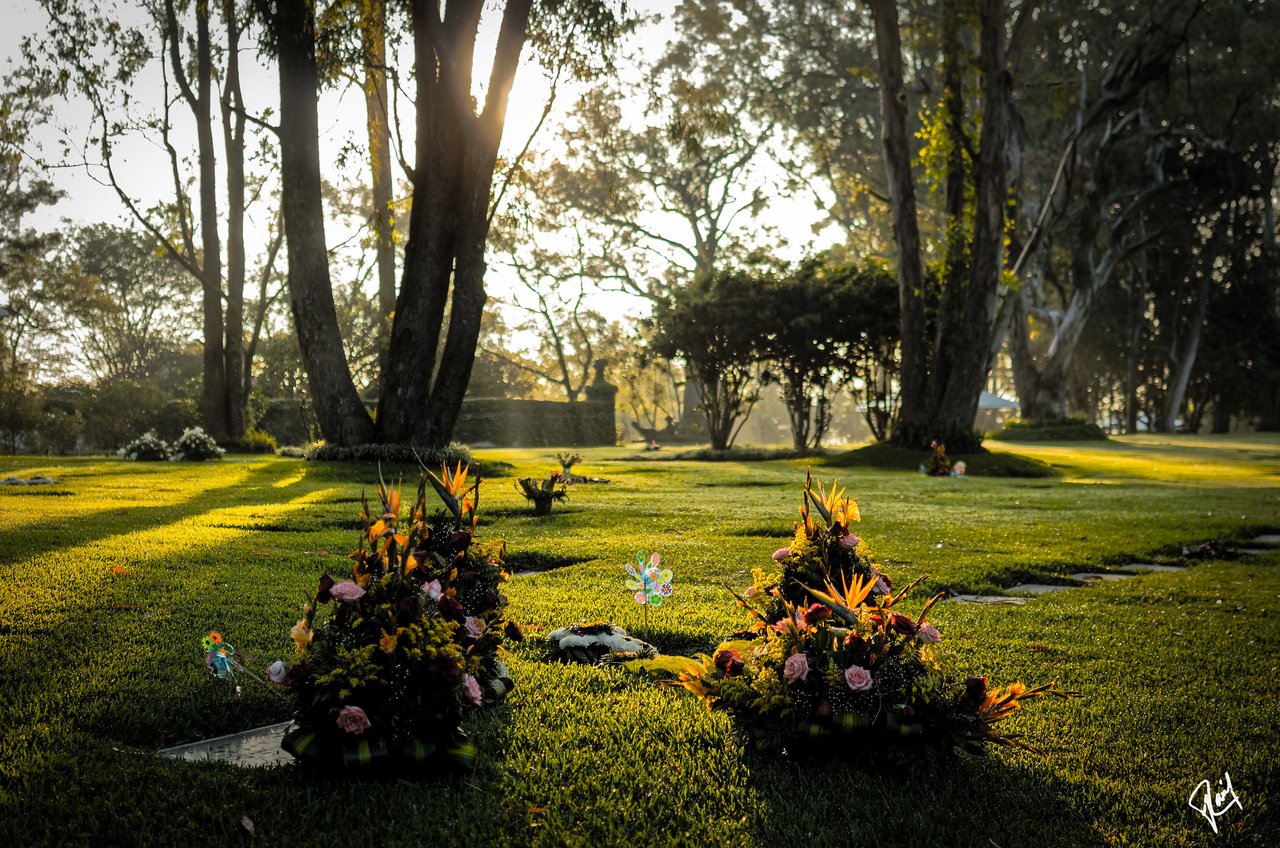
How do they celebrate Halloween in Spain? Well, it’s called Dia de las Brujas, which translates to “Day of the Witches”, and is a delightful blend of tradition and modern festivities.
Unlike the spooky connotations this name might suggest, Spanish Halloween mainly tilts towards a more child-centred celebration. Think costumes, candies, spooky activities and carved pumpkins!
Now, while Halloween in Spain has absorbed quite a few American influences, Spain still holds onto its unique traditions.
In Northern Spain, for example, you’ll be greeted by “La Castañada”. With origins dating back centuries, this heartwarming tradition revolves around families roasting chestnuts and sweet potatoes.
The air is filled with the earthy aroma of roasted delights, signifying the onset of winter, and it’s a fabulous time to visit the regions of Asturias, Catalonia, Salamanca and Cantabria, where it’s celebrated.
Head to Galicia, and the night takes a Celtic twist with “Noite dos Calacús” or “The Night of the Pumpkins”. This is one of the best places to visit in Spain for Halloween.
The streets come alive with stories, mystic Celtic rituals, and the enchanting glow of “Queimada” – a special drink set aflame, casting eerie blue glows.
This concoction, often paired with incantations, is believed to ward off evil spirits.
1st November: Día de Todos los Santos (All Saints Day)
When the calendar flips to the 1st of November in Spain, the atmosphere is calm and reverent. Marking Día de Todos los Santos or All Saints Day, this is the most significant day among the three days dedicated to remembering the departed in Spain.
Far from the playful spirits of Día de las Brujas, All Saints Day is a solemn occasion, dedicated to honouring both recognised saints (Spain is still very Catholic) and dearly departed loved ones.
Across the country you’ll see families, clad in respectful attire, making their way to cemeteries. Grave visitations have become a heartfelt gesture on this day, where the laying of flowers and silent prayers take centre stage.
The air is heavy, not with sadness, but with a profound sense of remembrance and love.
But, as with many Spanish traditions, food plays a comforting role. ‘Huesos de Santo’, translating to ‘Bones of the Saint’, is a traditional sweet treat made of marzipan and egg yolk filling.
2nd November: Día de los Muertos (Day of the Dead)
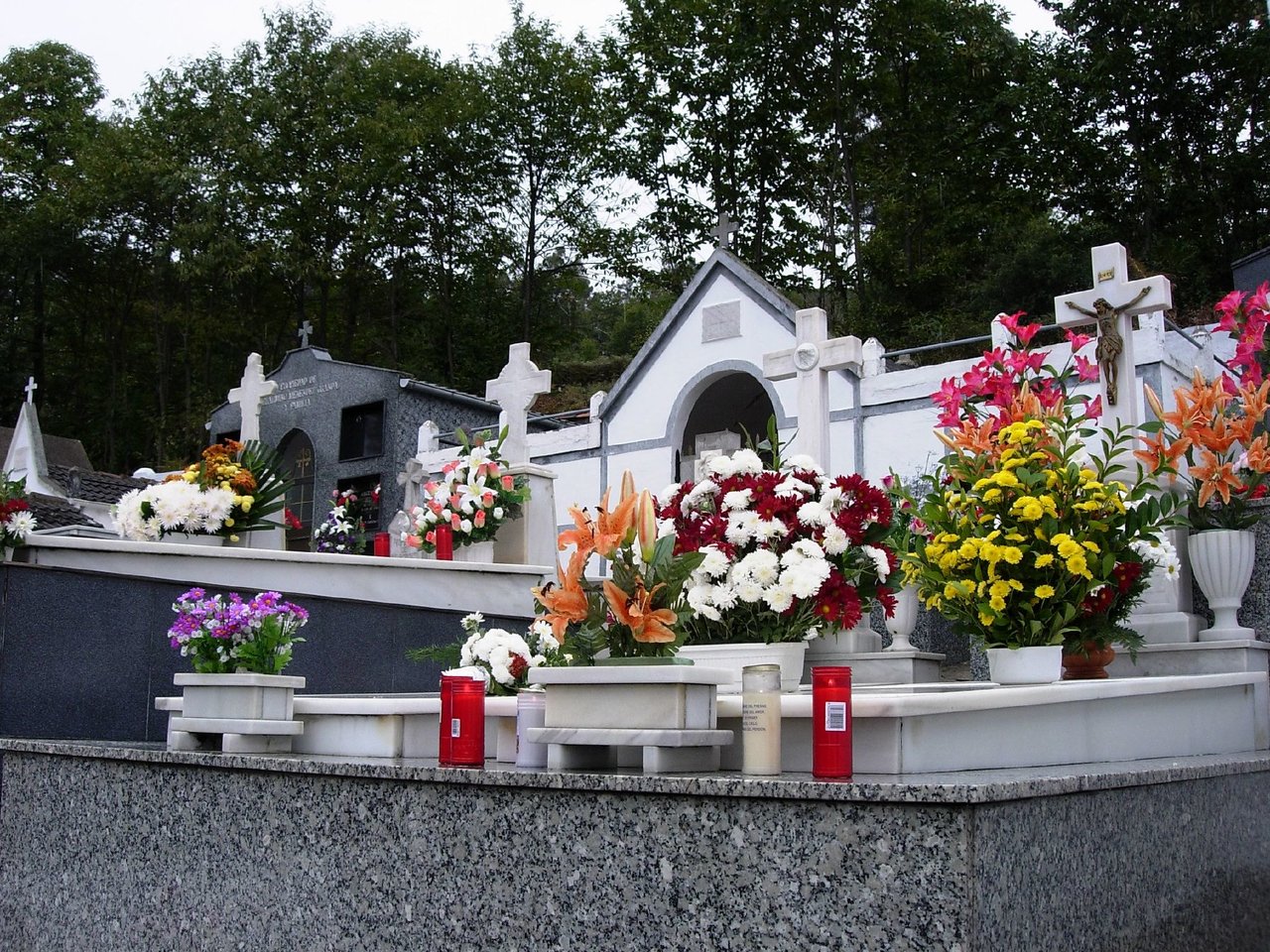
While Mexico might steal the spotlight with its vivid Día de los Muertos celebrations, Spain has its own distinct way of commemorating the dearly departed on the Day of the Dead.
Nowadays, for many people in Spain, this specific day isn’t marked as a standalone festivity but is overshadowed by the importance of All Saints Day the day before.
Spain’s Day of the Dead might draw parallels with its Mexican counterpart, but it retains a unique Spanish essence.
On this day, families gather to fondly remember and honour their loved ones who’ve journeyed on.
Cemeteries also burst into colour, less like the sombre graveyards they usually are and more reminiscent of lovely and peaceful English gardens.
Where to See Spanish Day of the Dead Celebrations
So, if you want to see the most interesting Spanish Day of the Dead celebrations, where should you go?
Luckily for tourists, there are a few places that celebrate the day in unique and visually interesting ways. Here are my top picks:
Northern Spain (Galicia, Asturias, Cantabria)
The chilly winds up north carry whispers of ancient Celtic tales. This is the best place to celebrate Halloween in Spain, in my opinion!
Here, traditions like the “Noite dos Calacús” (Night of the Pumpkins) make a vivid appearance. Bonfires light up the night, stories of yore are shared, and of course, glasses filled with the famous Queimada drink are passed around.
Alicante
I’m a bit of a pro when it comes to Halloween in Alicante because this was the area I used to live in.
In Alicante, the modern mesh with the ancient seamlessly. The Feria de Todos Los Santos, a local festival, becomes a focal point of celebrations, with laughter, music, and dance filling the air.
In Denia, the town I used to live in, we got to enjoy La Feria de Denia, the local equivalent of the festival, where you’ll find local performances, fairground rides, and tapas stalls.
Visiting this fair was one of my favourite Denia activities.
In smaller towns like Moraira and Xàbia, you’ll find free parties and fairs organised by the towns for all to attend.
Málaga
Ever seen a zombie march? If not, you need to spend a few days in Málaga!
The Zombie March is a head-turning parade where the undead and other creatures take to the streets.
It’s lively, entertaining, and a little bit weird. There’s one certain thing, though: it adds an unmistakable modern twist to the age-old remembrance ceremonies!
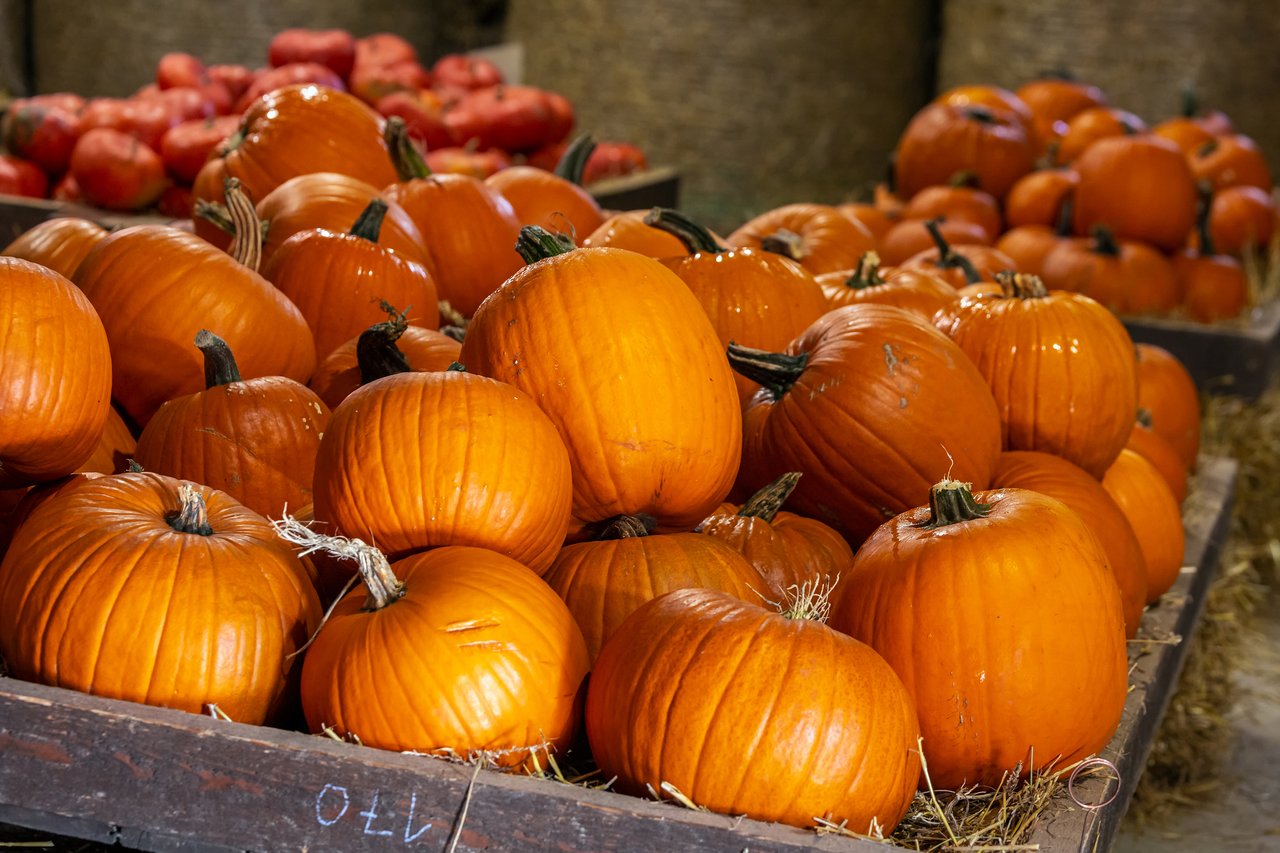
Spanish Halloween and Day of the Dead
Why Does Spain Celebrate Halloween?
Before witches, pumpkins, and spooky tales started finding their way into the Spanish October calendar, Halloween as we recognise it today was relatively unheard of in Spain.
But how exactly did Halloween travel from the lands of the Celts to the Iberian Peninsula?
The origins of Halloween trace back to the ancient Celtic festival of Samhain. The Celts believed that during Samhain, the boundary between the living and the spirit world grew thin, allowing spirits to easily cross over.
As Christianity spread across Europe, many pagan festivals, including Samhain, were integrated into Christian traditions. Samhain evolved into All Hallows’ Eve, the night before the Christian festival of All Saints’ Day.
Over time, All Hallows’ Eve became Halloween.
In recent decades, with globalisation and the influx of American culture via movies, TV shows, and other media, “Spanish Halloween” has taken on more familiar spooky motifs and symbols.
You won’t exactly find any Halloween towns in Spain akin to Salem, Massachusetts, but the holiday is getting more and more popular every year.
However, while kids in Spain today might don costumes and go trick-or-treating, the deeper, more traditional underpinnings of the holiday are still apparent.
Trick or Treating in Spain: Truco o Trato
Trick or treating in Spain was relatively unknown a few decades ago.
However, influenced by global pop culture, this playful tradition has found its way to Spanish streets. It’s hardly as widespread or celebrated as Spanish traditions like flamenco or tapas, but it’s growing in recognition.
While not as widespread as in some countries, children in urban areas, like the capital city of Madrid, do go trick or treating.
In Spanish, “trick or treat” is “truco o trato”.
Traditional Spanish Halloween Foods
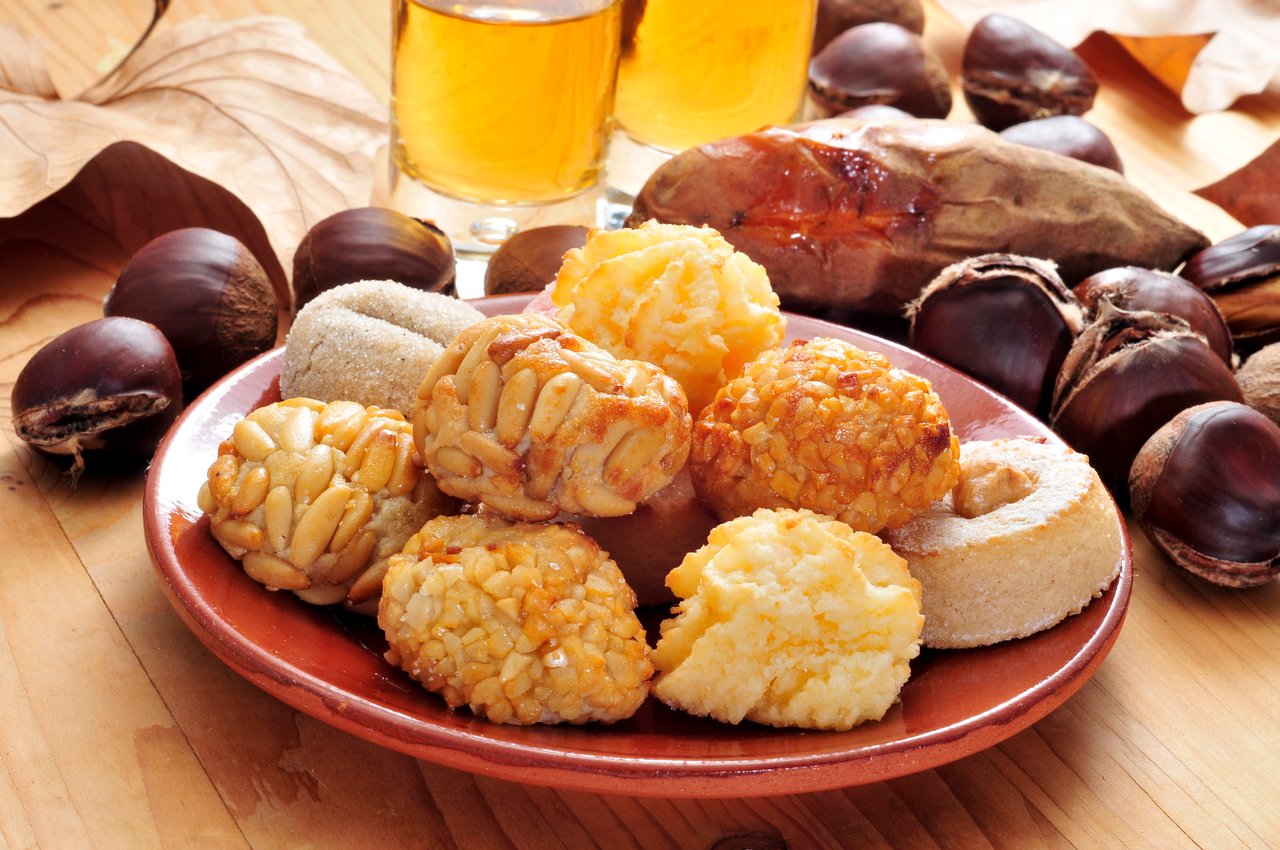
Like many things in Spain, there’s no better way to celebrate than with delicious food!
When we delve into Halloween traditions in Spain, the culinary journey is nothing short of mouth-watering.
For Halloween and Day of the Dead, “panellets”, almond-based sweets, take centre stage in Catalonia. In other regions, “buñuelos de viento”, light and airy fritters, are a must.
And of course, the “Huesos de Santo” (Bones of the Saint) cannot be overlooked; these marzipan confections symbolise bones and are particularly popular for All Saints’ Day.
Day of the Dead Celebrations in Mexico vs Spain
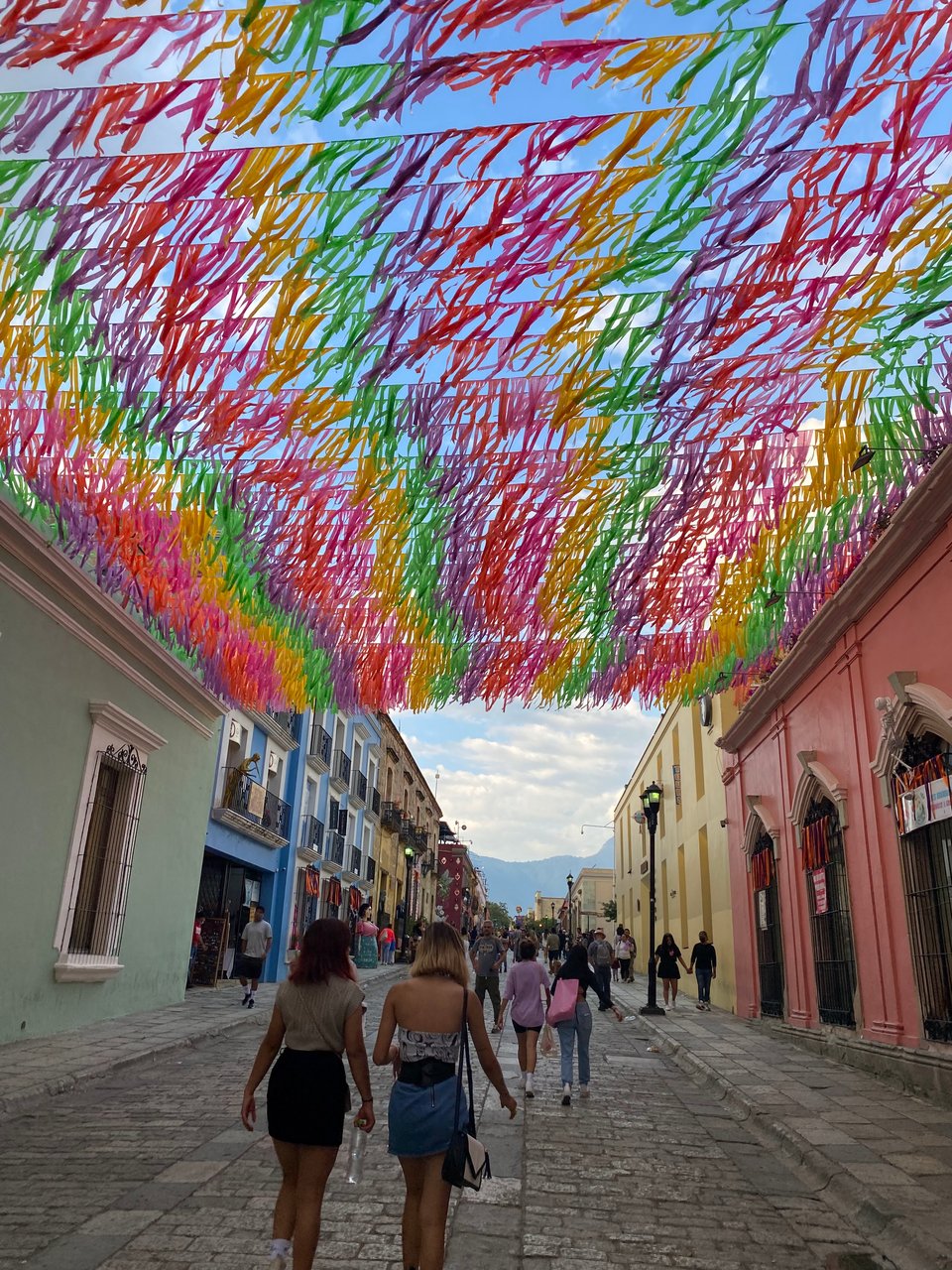
The Dia de los Muertos in Spain differs considerably from its Mexican counterpart. While both traditions honour deceased loved ones, the manner and intensity of celebrations vary.
Mexico bursts with vibrant marigold decorations, sugar skulls, and altars, whilst Dia de los Muertos in Spain is a more understated event, marked by visiting graves, laying flowers, and some regional traditions.
Yet, in both cultures, the core sentiment remains: remembering and paying respect to those who’ve passed, ensuring their memories live on.
